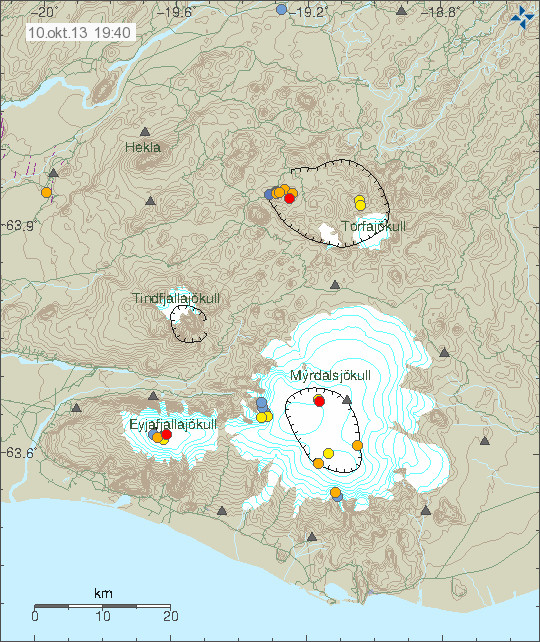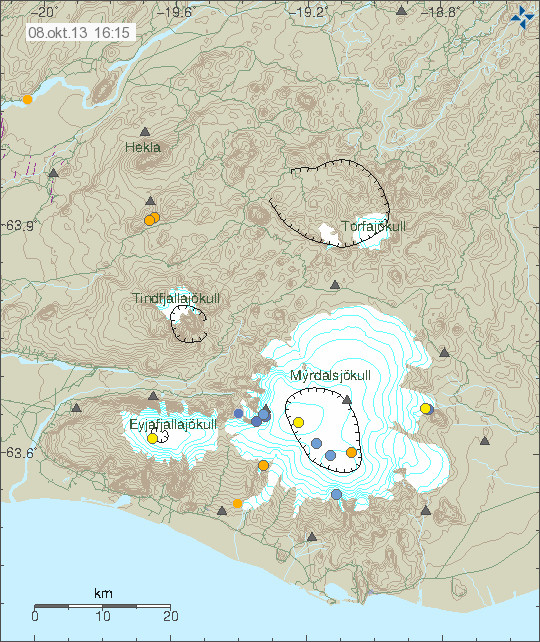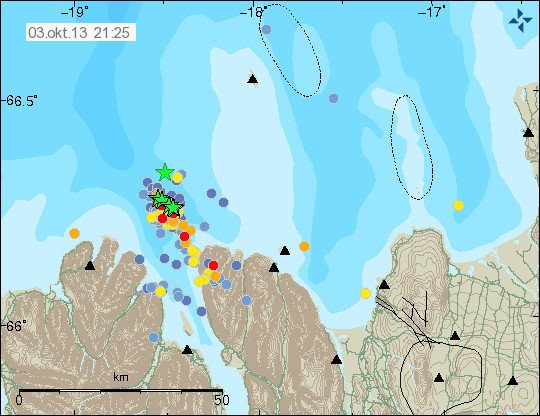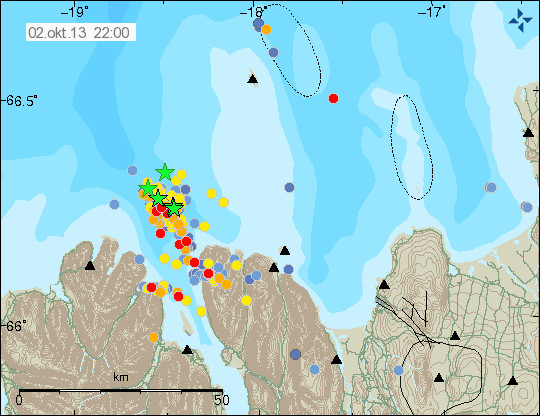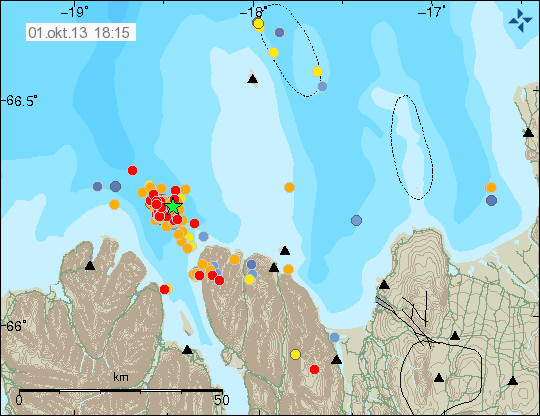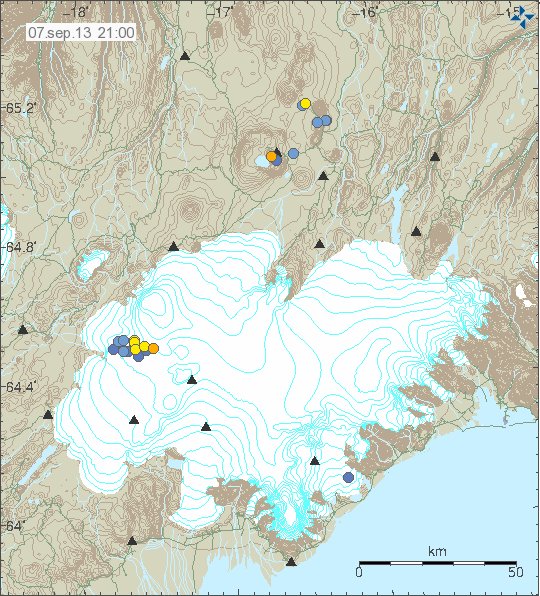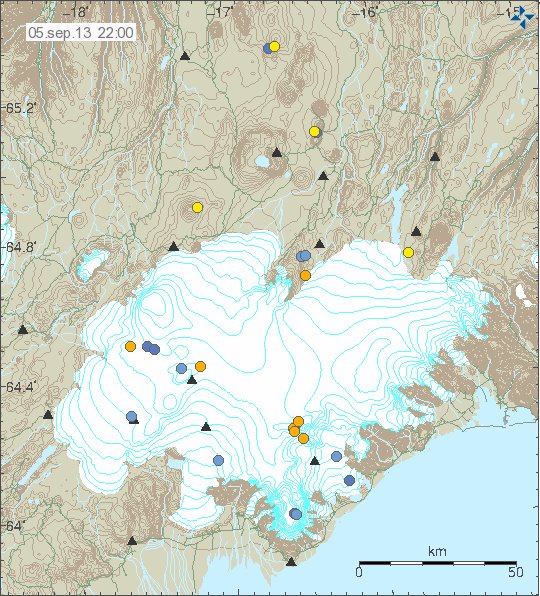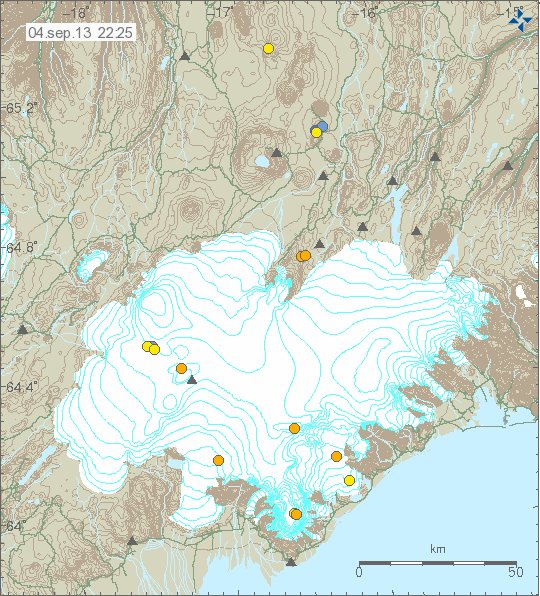In August-2013 there was an glacier flood from Hofsjökull volcano, this glacier flood was minor and did not cause any damage. The source of this glacier flood has now been found according to Icelandic Meteorological Office. A new glacier cauldron has been found in Hofsjökull glacier, where none was before. The cauldron is around 700 meters long and about 30 – 50 meters deep. The glacier is cracked a lot around the cauldron and it’s dangerous to travel to this area because of that. The hight of this cauldron is around 1700 meters above sea level.

Hofsjökull volcano and glacier. The new glacier cauldron is located at ~64°49,5‘N; 18°52‘W. Click on the image for full resolution. Image from NASA/USGS/Icelandic Meteorological Office/Geological Department of University of Iceland (Jarðvísindastofnun Háskólans).
According to Icelandic Meteorological Office this part of the glacier has not had any glacier cauldrons before that they know of. This cauldron has the volume of 1 million cubic meters (106 m3) according to Icelandic Meteorological Office. This area now has highly active hydro-thermal area and hot-springs. What formed this glacier cauldron is unclear at the moment, it was not an eruption since no such signals have been recorded from Hofsjökull volcano before or after the glacier flood in August-2013. It is also unclear if this glacier cauldron is going to create new glacier flood in the future.
Icelandic Meteorological Office announcement
Hlaup úr Hofsjökli í ágúst 2013 (vedur.is, in Icelandic)
Icelandic News
Fundu sigketil á Hofsjökli (mbl.is, Icelandic)
Blog post updated at 21:02 UTC on 11-October-2013.
Blog post updated at 01:45 UTC on 12-October-2013.

